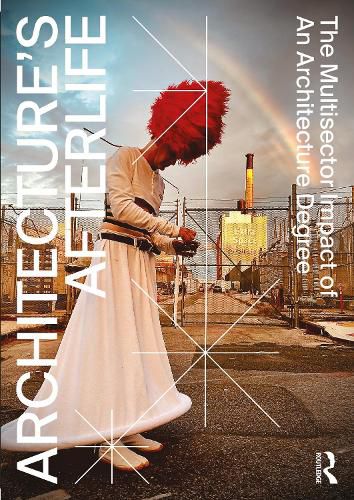Readings Newsletter
Become a Readings Member to make your shopping experience even easier.
Sign in or sign up for free!
You’re not far away from qualifying for FREE standard shipping within Australia
You’ve qualified for FREE standard shipping within Australia
The cart is loading…






Almost 40% of architecture graduates choose not to practise as architects. Instead, by 'leaving' their chosen profession, this surprisingly large but vastly overlooked cohort are making significant contributions to a wide range of other sectors, from politics to videogame design, demonstrating that architectural training can be a pathway to roles, and even leadership opportunities, across a variety of other professions.
Architecture's Afterlife is the first book to examine the sectors into which these graduates migrate, and to identify the transferable skills that are learned, but not always taught, in their degree programmes, and that prove most useful in their new careers.
The book - a result of a three-year pan-European study funded by Erasmus+ - provides a roadmap for increasing graduate employment, addressing skills shortages across all sectors and adapting curricula to changing professional landscapes. It is therefore essential reading for all those responsible for curriculum design and delivery in architecture and other disciplines, including deans, professors, postgraduate researchers and policy makers, as well as students and professionals seeking to expand their career prospects.
$9.00 standard shipping within Australia
FREE standard shipping within Australia for orders over $100.00
Express & International shipping calculated at checkout
Almost 40% of architecture graduates choose not to practise as architects. Instead, by 'leaving' their chosen profession, this surprisingly large but vastly overlooked cohort are making significant contributions to a wide range of other sectors, from politics to videogame design, demonstrating that architectural training can be a pathway to roles, and even leadership opportunities, across a variety of other professions.
Architecture's Afterlife is the first book to examine the sectors into which these graduates migrate, and to identify the transferable skills that are learned, but not always taught, in their degree programmes, and that prove most useful in their new careers.
The book - a result of a three-year pan-European study funded by Erasmus+ - provides a roadmap for increasing graduate employment, addressing skills shortages across all sectors and adapting curricula to changing professional landscapes. It is therefore essential reading for all those responsible for curriculum design and delivery in architecture and other disciplines, including deans, professors, postgraduate researchers and policy makers, as well as students and professionals seeking to expand their career prospects.